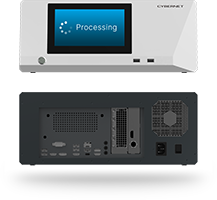Medical professionals face a dilemma arising from two requirements. First, they must extensively talk to their patients, asking them about their condition and how they’re reacting to their current treatment. They must also take notes as they go, usually in the form of audio recordings of the conversation between provider and patient.
At the same time, they also have to fill out documents like SOAP notes and EHRs to match standard methods for recording and sharing information in a process called medical transcription. As they can’t do both things at the same time, providers often rely on other professionals to perform this service or do so after their shift. However, artificial intelligence can take over this responsibility, saving providers time and preventing medical errors from occurring.
The Issues with Manual Medical Transcription
Historically, medical transcription has been performed manually, with a medical transcriptionist taking audio or video content and converting it into accurate text. A transcriptionist must listen to recordings of patient consultations covering medical history, symptoms, and diagnosis and then translate this information into medical documentation. These documents are later used to record changes in a patient’s condition or treatment, conduct research, and even be used in insurance claims processing and as evidence in legal cases.
However, these transcriptions must be performed by either a professional transcriptionist or a healthcare provider. In the case of the former, this often means contracting a third-party service, which has its own host of issues. The most critical is that doing so means transmitting private health information to outside entities, which can easily lead to breaching privacy and committing a HIPAA violation.
The other alternative is to have healthcare providers themselves perform the transcription. Unfortunately, this option is impractical for providers; if they try to transcribe notes into documentation while seeing patients, they have to divide their attention and fulfill neither of the two tasks well. If they transcribe after they finish seeing their patient, then the task often extends past their work hours and into their personal life, or “pajama time,” as providers call it. This often leads to providers feeling overwhelmed and burned out, which is a major factor in employees leaving the healthcare sector.
The Solution: AI-Powered Automated Transcription
Given the drawbacks of the prior solutions to the transcription issue, it’s no wonder many healthcare groups are investing in automated transcription software. This software can pull information from audio recordings to complete documentation without requiring human input.
While this type of software has existed for some time, recent developments in artificial intelligence have further enhanced its capabilities. AI’s capacity for natural language processing enables it to process auditory information far more effectively and even discern differences in dialect, slang, or odd grammar. A medical AI box PC equipped with NLP software can automatically turn spoken words into written information, which is far easier for other programs to process and utilize.
Other benefits of of AI-powered transcription include:
- Encouraging Dictation: Dictation is naturally faster than typing, with the average person able to say 125 words per minute versus typing just 30 words per minute. This speeds up the documentation process and makes it easier for providers and patients to cover more during an appointment. A provider can simply record the appointment on a medical-grade tablet and then upload that data to the appropriate program afterward.
- Reducing Medical Errors: Because AI does not get tired or distracted, it can record every word spoken between providers and patients and prevent information from going unrecorded.
- Lower Costs: By implementing AI-powered transcription tools, healthcare groups don’t need to hire and train transcriptionists or contract third-party services, saving them money overall.
Embrace AI-Powered Transcription with Cybernet Manufacturing
With the need for digital documentation becoming increasingly important in healthcare, the need for effective and accurate transcription will only increase as well. By implementing AI-enhanced transcription tools, healthcare groups can save hours of unnecessary work for their employees, letting them focus on their patients when they’re at work and relax when they’re not.
If you’re looking for AI computers or computer tablets to help your employees with automated transcription, contact the team at Cybernet Manufacturing. We’d be happy to explain how our products can help make note-taking and documentation a breeze.

